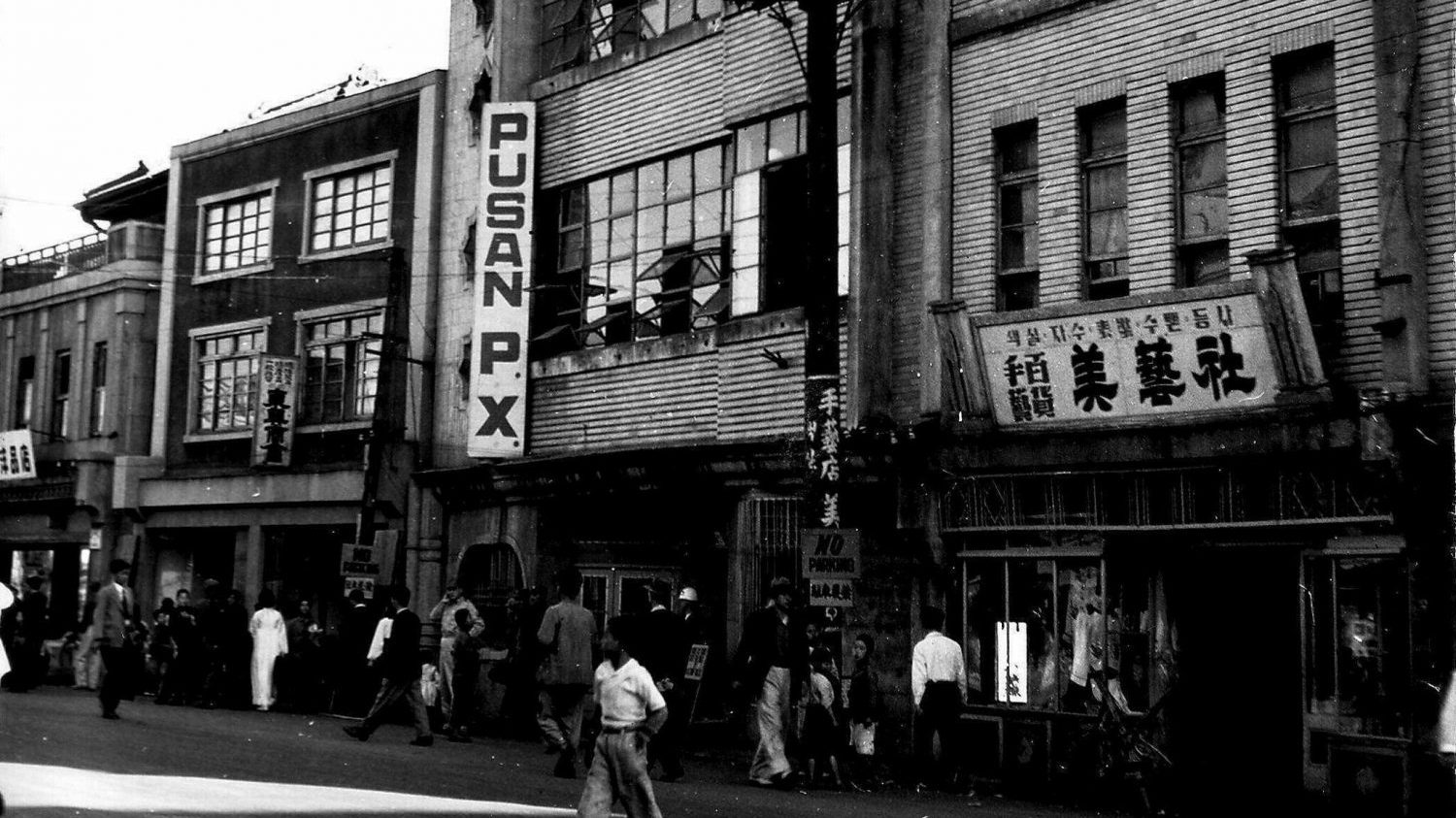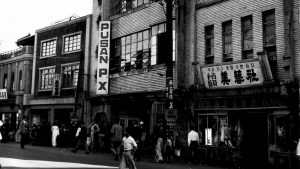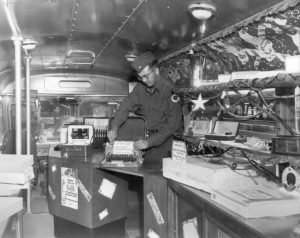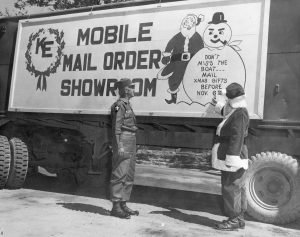#FlashbackFriday: The Exchange During the Korean War

Sixty-nine years ago this week, on July 27, 1953, representatives of the United States (as head of the United Nations Command), the People’s Republic of China and North Korea signed an armistice that ended the Korean War after more than three years of combat.

The Pusan PX in South Korea during the Korean War.
When the war began June 25, 1950, Exchanges in the continental United States expanded greatly to serve Soldiers and Airmen getting ready for deployment to Korea.
Post exchanges operated throughout South Korea, with headquarters based in Yokohama, Japan. A month after the first United Nations troops landed in Korea, Exchange supplies were on their way to the front lines from the Japanese Central Exchange’s strategic terminal point at Pusan. The depot handled hundreds of tons of merchandise and equipment for the Korean exchanges, bought in the United States from the Army & Air Force Exchange Service.
During some weeks, more than $1 million worth of supplies was shipped to Pusan. One shipment was so large that it required 199 freight cars to haul the merchandise from the port to PXs throughout the country.
The largest of the exchanges was in the five-story Tong-Wa department store in downtown Seoul. Other major exchanges opened in Pusan, Taegu, Taejon, Suwon and Wonju. Hundreds of smaller branch exchanges opened throughout the country.
Mobile exchanges served troops in isolated areas and in locations where a stationary exchange was not feasible.

During the Korean War in 1952, a service member prepares gifts for American GIs to send home to their loved ones during the holidays. With help from the Exchange, the Japan Central Exchange renovated 18 school buses into mobile retail facilities that traveled throughout Korea during the war.
The mobile exchanges took different forms, ranging from a C-47 Air Force PX to a two-car PX train used by a military police battalion to 10 2½-ton trucks at Pusan Depot. As battlefield operations slowed down in Korea, mobile exchanges became more common. In October 1952, 18 converted school buses were assigned to forward areas of the Eighth Army.
The origin of Exchange catalogs dates back to the Korean War during Christmas 1950. “Operation Santa Claus” allowed troops in Korea to order gifts for families and friends. Volunteers in Japan wrapped and mailed the gifts.
By 1952, exchange sales in Korea reached nearly $76 million.
On the homefront, wherever troops in CONUS prepared for deployment to Korea, the Exchange was there. In some cases, Exchange service was ready to go three days after commanders and the Exchange were notified about an installation reopening.

A Soldier shops at a mobile showroom in Korea set up by the Japan Central Exchange during the Korean War, circa 1951. The origin of modern-day Exchange catalogs date back to the Korean War during Christmas 1950. Operation Santa Claus allowed troops in Korea to order gifts for families and friends. Volunteers in Japan wrapped and mailed the gifts.
“A typical case was Donaldson AFB, Greenville, South Carolina, at which exchange service was available three days after notice of reactivation … and an attractive store, branches, snack bar and concessions [were] operating only six weeks after that,” according to the FY 1951 annual report.
Exchanges continue to operate throughout South Korea. In 2017, the Army & Air Force Exchange Service opened a 300,000-square-foot shopping mall at Camp Humphreys, its third largest store in the world. In November 2021, the Exchange unveiled a 255,800-square-foot distribution center and bakery at Camp Humphreys. The grand opening was the culmination of a nine-year effort to relocate most of the Exchange’s Korea operations in support of the Yongsan Relocation Plan, a U.S. Army effort to move most forces and command activities from Seoul and other parts of the country to Humphreys.
Exchange HQ in Dallas is on Walton Walker Boulevard, named for native Texan Lt. Gen. Walton Walker, Eighth Army commander during the Korean War. Walker, a Veteran of both World Wars, was killed in a jeep accident north of Seoul in December 1950. He was buried in Arlington National Cemetery in 1951, the year that Walton Walker Boulevard was given its name. Camp Walker, home to the Korea Southern Exchange, is named for him.
Sources: One Hundred Years of Service: A History of the Army and Air Force Exchange Service, Exchange Post archives, Exchange history Flickr.


While working in Madrid 1965-66 as Personnel Manager for the Spain Area Exchange, I worked with our Warehouse Manager, Mr. Bartolomeo. He was working in Seoul during the Korean War and told me how they had to flee Seoul when the Reds were going to take over the city. He said he locked the warehouse (which was full of PX merchandise). When he returned to Seoul after its re-capture by UN troops, the lock was still on the warehouse and the merchandise was still there! Good story but I can’t verify it! (I worked for AAFES from 1963 to 1988)